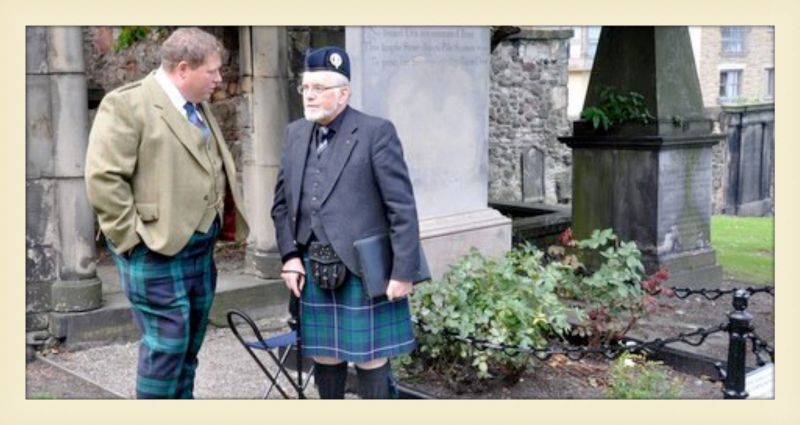 James VII reinstated the order of the thistle in 1687, following various periods of desuetude, however it has continued unbroken since that period, although William and Mary did not call the order together during their reign. The present chapel, by Robert Lorimer appendant to St Giles is not however the first chapel used by the order. King James ordered that the Abbey Church, which had previously been the Parish church for the inhabitants of the burgh of the Canongate, be converted into a Roman Catholic Chapel Royal and the chapel of the Order of the Thistle. Canongate Kirk was therefore erected by the King’s Mason, James Smith, using in part a mortification left by Sir Thomas Moodie of Saughtonhall. Although commenced at the instigation of James VII in 1688, the church was not completed until 1691, after the Glorious Revolution had set William of Orange’s right to reign in stone. Perhaps this explains the schizophrenia of the building; it is built to cruciform pattern, anathema in post reformation church architecture prior to the Victorian era, but with a very Dutch frontage, featuring a face-on gable and bold ogee curves, perhaps the most kenspeckle in the capital and yet with an odd Doric porch, perhaps ushering in the Enlightenment.
James VII reinstated the order of the thistle in 1687, following various periods of desuetude, however it has continued unbroken since that period, although William and Mary did not call the order together during their reign. The present chapel, by Robert Lorimer appendant to St Giles is not however the first chapel used by the order. King James ordered that the Abbey Church, which had previously been the Parish church for the inhabitants of the burgh of the Canongate, be converted into a Roman Catholic Chapel Royal and the chapel of the Order of the Thistle. Canongate Kirk was therefore erected by the King’s Mason, James Smith, using in part a mortification left by Sir Thomas Moodie of Saughtonhall. Although commenced at the instigation of James VII in 1688, the church was not completed until 1691, after the Glorious Revolution had set William of Orange’s right to reign in stone. Perhaps this explains the schizophrenia of the building; it is built to cruciform pattern, anathema in post reformation church architecture prior to the Victorian era, but with a very Dutch frontage, featuring a face-on gable and bold ogee curves, perhaps the most kenspeckle in the capital and yet with an odd Doric porch, perhaps ushering in the Enlightenment.

When Robert Burns arrived in Edinburgh on the 28th November 1786, he was extremely keen to pay his respects at the grave of the man, who above all inspired his style and muse, Robert Fergusson. He was disgusted to discover that Fergusson lay in an unmarked grave and immediately sought the permission of James Gentle, Bailie of the Canongate to erect a stone over his remains. The work was carried out by Robert Burn of Messrs R and J Burn, Masons at a cost of £5 10s. The account was not paid until 5th February 1792, when, in a letter to Mr Peter Hill, stationer, Edinburgh, Burns wrote “He was two years in erecting it, after I commissioned him for it; & I have been two years paying him, after he sent me his account; so he and I are quits. He had the hardiesse to ask me interest on the sum; but considering that the money was due by one Poet, for putting a tombstone over another, he may, with grateful surprise, thank Heaven that ever he saw a farthing of it.”
Throughout 2009 and 2010, the Edinburgh Burns Club managed to raise £1,200 in total to pay for the restoration of the lair. The stone was recently restored thanks to a generous grant from the Scottish Parliament, however the remainder of the site also required similar care and Ballantine of Bo’ness were engaged to have the wrought ironwork restored. The final stage was to freshen the grave itself with flora which tied together the three Roberts; Fergusson, Burns and Robert Louis Stevenson – who towards the close of his own life wrote home from Samoa, expressing his desire to provide such wherewithal as may be necessary to restore the grave.
The rededication was a moving ceremony, conducted by Rev Neil Gardner and assisted by The Right Hon. and Revd George Grubb (Lord Provost and Lord Lieutenant of Edinburgh), with readings from his own original work by David C Purdie.

No comments yet.